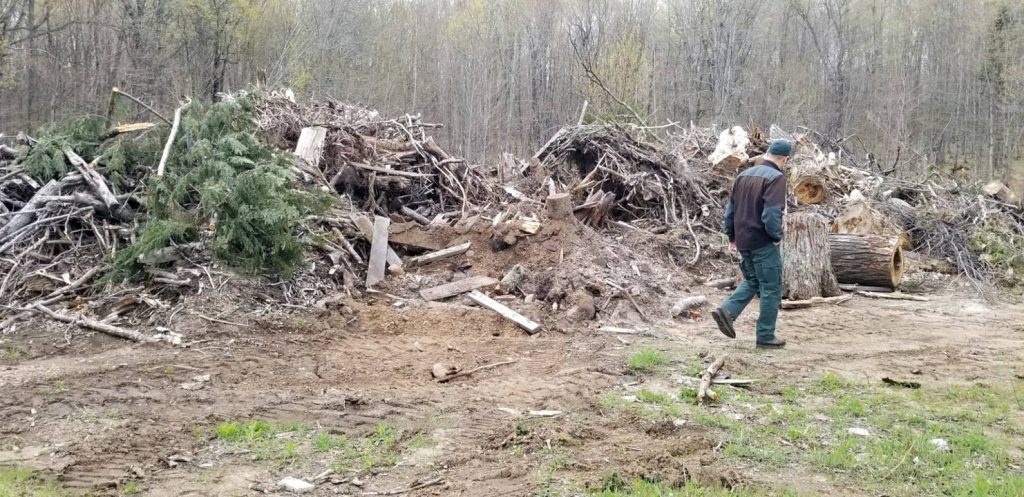
Gladstone, MI — Hiawatha National Forest officials remind the public that it is illegal to dump waste on national forest lands, including gravel pits.
“Unauthorized dumping on public lands is illegal. That includes dumping of materials like yard waste, branches, rocks or soil,” says Forest Supervisor Cid Morgan.
The reminder stems from the recent discovery of illegal dumping in Paulsen Pit near AuTrain, Michigan. In addition to the potential for hindering future authorized use of the pit, dumping of organic material and fill can spread non-native invasive species.
“We encourage the public to utilize authorized waste disposal methods made available in their local communities,” said Morgan.
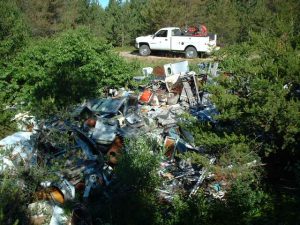 Unfortunately, many tons of organic materials and trash are dumped illegally on public lands in the central and eastern Upper Peninsula each year. Illegal dumps on public land often include common household trash, tires, used automobiles, yard waste, and appliances.
Unfortunately, many tons of organic materials and trash are dumped illegally on public lands in the central and eastern Upper Peninsula each year. Illegal dumps on public land often include common household trash, tires, used automobiles, yard waste, and appliances.
“While the dumper may avoid paying the nominal fees required for proper waste disposal, illegal dumping on public lands has a high hidden cost for local communities,” said Charlie Marsh, West Zone District Ranger.
The first hidden cost is that illegally dumped trash may impact the environment. Depending on what is being dumped, trash can poison the water table and nearby streams, or increase the spread of invasive species. Some waste can even sicken or kill wildlife, plants, and people.
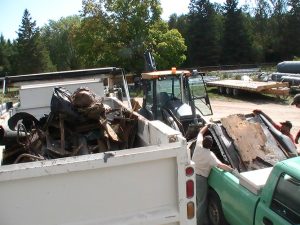 According to Jessica Stuntebeck, an Environmental Engineer with the US Forest Service, people are sometimes surprised that items in every day household garbage can be so dangerous.
According to Jessica Stuntebeck, an Environmental Engineer with the US Forest Service, people are sometimes surprised that items in every day household garbage can be so dangerous.
“Many common waste items — from batteries to household cleaners to medications and more — can be harmful to the environment, and can be difficult and costly to clean up,” she adds.
This brings us to the second hidden cost of dumping: clean up. Some polluting wastes require complicated, expensive, professional clean up. But even something relatively simple, like the pile of natural material dumped in a gravel pit, has associated clean-up costs. In addition to law enforcement time, the time of other Forest employees is required in order to remove the material to a suitable location, where dump fees are often required. When you add transportation costs, it becomes clear that illegal dumping ends up costing the tax payer.
“When you combine one pile of lawn waste with the literally tons of trash removed by Forest Service employees and volunteers each year, the tab to society is significant,” said Micah Reuber, Acting East Zone District Ranger.
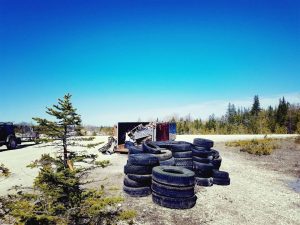 For instance, the East Zone hosts two Forest Clean Up Day events annually near St. Ignace for the past twenty years. Reuber estimates that in the course of that time the group has removed well over 1,200 tires, 200-plus car batteries, close to 1,000 appliances of all types, and even a piano! Each year, numerous volunteers and organizations donate time and equipment to haul away someone else’s garbage.
For instance, the East Zone hosts two Forest Clean Up Day events annually near St. Ignace for the past twenty years. Reuber estimates that in the course of that time the group has removed well over 1,200 tires, 200-plus car batteries, close to 1,000 appliances of all types, and even a piano! Each year, numerous volunteers and organizations donate time and equipment to haul away someone else’s garbage.
On the Hiawatha’s West Zone many volunteers have dedicated time to cleaning up illegal dumps by volunteering to “Adopt a Forest”. In one year alone, thousands of person-hours have been donated to clean up after litterbugs.
“While the Paulsen Pit incident may seem like a small thing, unfortunately it is only the tip of a much larger and costlier iceberg,” said Marsh. “Collectively, every illegal dump should remind all of us that littering is a serious problem.”
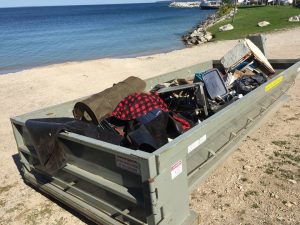 Hiawatha National Forest encourages the public to take an active role in reducing the amount of litter in the woods.
Hiawatha National Forest encourages the public to take an active role in reducing the amount of litter in the woods.
“We appreciate the public’s support in tackling this problem. You can help by always packing out what you pack in, by volunteering to help remove trash and by reporting any dumping you encounter on National Forest land,” said Morgan.
For more information on how you can help, or to report illegal dumping, please contact your local National Forest office or use the “Contact Us” feature on our website: https://www.fs.usda.gov/hiawatha.
 Keweenaw Report Your Source for Local News and Sports
Keweenaw Report Your Source for Local News and Sports





